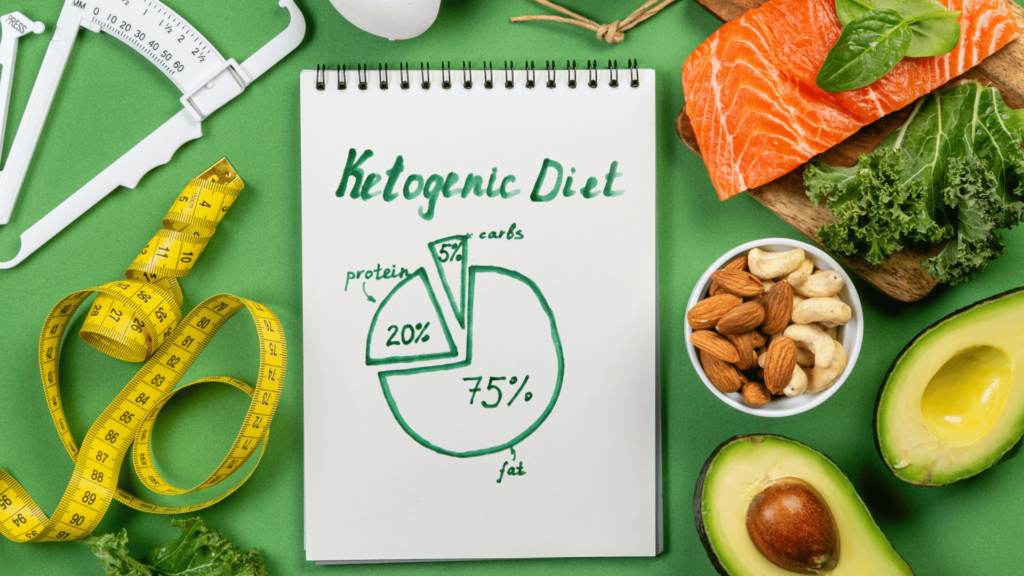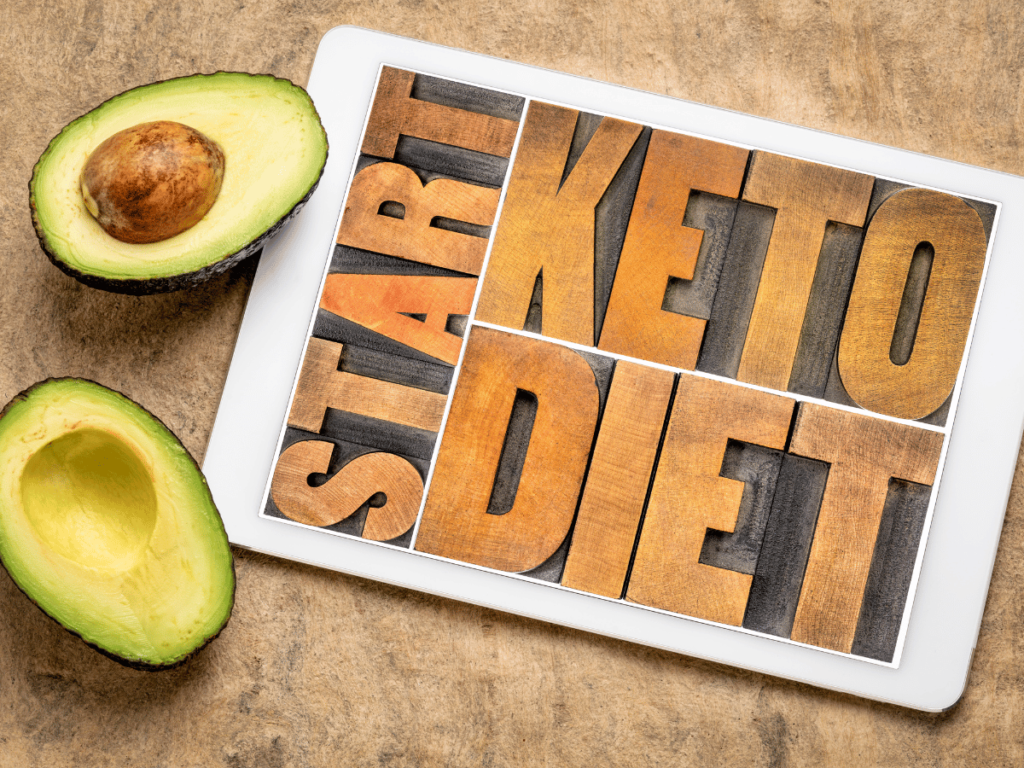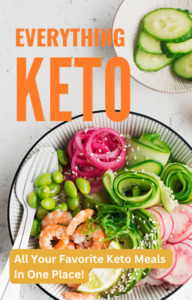
Today, I will be talking about the keto diet, a trend that’s been capturing the attention of health enthusiasts worldwide. So what is the keto diet about, and how does it work?
When you hear ‘keto,’ think of high-fat, low-carbohydrate foods designed to push your body into a state known as ketosis. This isn’t just about weight loss; it’s also about tapping into an ancient energy source that humans have utilized for centuries.
Originally, the ketogenic diet was a medical prescription for controlling epilepsy in the early 20th century, which speaks volumes about its impact on brain function. Fast forward to now, and you’ll find out how it’s evolved into a beloved regimen for shedding pounds and enhancing lifestyle.
Understanding Keto Diet Basics

So, if you’re curious about the nuts and bolts of the keto diet, I get that. Let’s break it down.
The keto diet’s crux is managing your macronutrient intake, with a strong emphasis on fats. Typically, we’re looking at about 70-80% of your daily calories from fat, 10-20% from protein, and a mere 5-10% from carbohydrates. This isn’t your average food pyramid!
Now, don’t just think you’ll be eating piles of bacon and cheese (though they’re on the menu). There’s a slew of keto-friendly foods that you’ll want to stack up on leafy greens, nuts, seeds, avocados, and fatty fish like salmon are all stars of this show.
On the flip side, you’ll need to steer clear of sugary sweets, grains, and starchy veggies to maintain ketosis. Think of it as a nutritional balancing act.
Key Principles Of The Keto Diet
- Macronutrient Ratios:
- High Fat: 70-80% of total daily calories
- Moderate Protein: 20-25%
- Low Carbohydrates: 5-10%
- Carbohydrate Restriction:
- Typically limited to 20-50 grams of net carbs per day.
- This restriction forces the body to enter ketosis, where it starts using ketones for energy instead of glucose.
- Sources of Fats:
- Healthy fats such as avocados, olive oil, nuts, seeds, and fatty fish.
- Limited intake of saturated fats and avoidance of trans fats.
- Protein Moderation:
- Adequate protein intake is essential, but excessive protein can be converted into glucose, potentially hindering ketosis.
- Carbohydrate Selection:
- Emphasis on non-starchy vegetables, leafy greens, and low-carb fruits.
- Avoidance of high-carb foods like grains, sugars, and starchy vegetables.
Understanding Ketosis

Ketosis, a metabolic state induced by the ketogenic diet, is a fascinating and transformative process that lies at the core of the diet’s efficacy.
In this state, the body undergoes a profound shift, transitioning from its conventional reliance on glucose to burning stored fats for energy. This metabolic adaptation gives rise to the production of ketones, which become the primary fuel source.
Understanding ketosis is key to unlocking the benefits associated with the ketogenic diet, ranging from weight loss and improved mental clarity to enhanced energy levels.
Delving into the intricacies of this physiological phenomenon provides insight into the mechanics that make the ketogenic diet a unique and compelling approach to nutrition and well-being.
- Ketosis Defined: The metabolic state where the liver produces ketones from fatty acids, serving as an alternative fuel source for the body.
- Ketone Bodies: Acetoacetate, beta-hydroxybutyrate (BHB), and acetone are the three primary ketones produced during ketosis.
- Adaptation Period: It may take a few days to a couple of weeks for the body to fully adapt to ketosis. During this time, individuals may experience the “keto flu” as the body adjusts to the new energy source.
Benefits Of The Keto Diet

While the keto diet offers these benefits, it’s crucial to approach it with a well-informed perspective and consider individual variations in response.
Consulting with healthcare professionals before embarking on significant dietary changes is recommended to ensure the approach aligns with specific health goals and needs.
Key Benefits Of The Keto Diet
- Weight Loss: The ketogenic diet is renowned for its effectiveness in promoting weight loss. By restricting carbohydrate intake and prioritizing fat consumption, the body enters a state of ketosis, encouraging the burning of stored fats for energy and facilitating weight loss.
- Stabilized Blood Sugar Levels: With reduced carb intake, the keto diet can contribute to stabilized blood sugar levels. This is particularly beneficial for individuals with insulin resistance or those seeking better blood sugar control.
- Enhanced Mental Clarity: Many adherents of the keto diet report improved cognitive function and mental clarity. The consistent energy supply from ketones may support better focus and concentration.
- Appetite Control: High-fat and protein-rich meals can promote a sense of fullness and satiety, potentially reducing overall calorie intake. This appetite control aspect can be advantageous for weight management.
- Increased Energy Levels: As the body becomes adept at utilizing ketones for fuel, individuals often experience more stable and sustained energy levels throughout the day, minimizing energy crashes associated with carb-heavy diets.
- Improved Triglyceride and HDL Cholesterol Levels: Some studies suggest that the keto diet may positively impact cardiovascular health by reducing triglyceride levels and increasing high-density lipoprotein (HDL) cholesterol, though individual responses can vary.
- Potential Therapeutic Applications: The keto diet has shown promise in certain therapeutic applications, such as managing epilepsy in some cases and supporting neuroprotective effects.
- Reduced Inflammation: Some individuals on the keto diet report a reduction in inflammatory markers, which may contribute to improvements in conditions associated with chronic inflammation.
- Better Blood Pressure Control: The keto diet may have positive effects on blood pressure, potentially assisting individuals in maintaining healthy cardiovascular function.
- Metabolic Flexibility: By training the body to efficiently switch between using glucose and ketones for energy, the keto diet promotes metabolic flexibility, allowing individuals to adapt to different nutritional states more effectively.
Starting The Keto Diet

Embarking on the ketogenic diet requires careful planning and a commitment to making significant dietary adjustments. Here are practical steps and advice for someone starting the keto diet:
Keep in mind there are many different keto diet options available so choose one that suits your goals.
Steps To Starting Keto
1. Educate Yourself:
- Gain a solid understanding of the principles behind the keto diet, including macronutrient ratios, food choices, and the concept of ketosis. Numerous online resources and reputable books can provide comprehensive information.
2. Calculate Your Macros:
- Use online calculators to determine your personalized macronutrient ratios based on factors like age, weight, activity level, and health goals. Adjust these ratios to fit within the standard keto ranges.
3. Clean Out Your Kitchen:
- Remove high-carb foods from your pantry and refrigerator to avoid temptations. Stock up on keto-friendly staples like avocados, olive oil, meats, eggs, and low-carb vegetables.
4. Plan Your Meals:
- Prepare a weekly meal plan that includes a variety of keto-friendly recipes. Planning helps you stay on track and ensures you have the right ingredients on hand.
5. Focus on Whole Foods:
- Prioritize whole, nutrient-dense foods over processed alternatives. Incorporate a variety of vegetables, lean meats, fish, nuts, seeds, and healthy fats into your meals.
6. Stay Hydrated:
- Drink plenty of water to stay hydrated, especially during the initial phases of the diet. Adequate hydration is essential for supporting overall health and can help alleviate potential side effects like the keto flu.
7. Monitor Electrolytes:
- Due to the diuretic nature of the keto diet, it’s crucial to ensure an adequate intake of electrolytes, including sodium, potassium, and magnesium. This can help prevent symptoms such as fatigue and muscle cramps.
8. Gradual Transition:
- Consider gradually reducing carb intake over a few days rather than making an abrupt change. This may ease the transition and minimize potential side effects.
9. Track Your Progress:
- Keep a food diary or use mobile apps to track your daily food intake. Monitoring your macros can help ensure you’re staying within the recommended ranges and achieving your desired nutritional balance.
10. Be Patient and Listen to Your Body:
- Understand that adapting to the keto diet takes time. Be patient with your body as it adjusts to using fat for fuel. Listen to hunger and satiety cues to avoid overeating.
11. Seek Support:
- Connect with others who are following or have experience with the keto diet. Online communities and support groups can provide valuable tips, motivation, and advice.
12. Consult a Healthcare Professional:
- Before starting any significant dietary change, especially if you have pre-existing health conditions, consult with a healthcare professional or a registered dietitian to ensure the keto diet aligns with your individual needs and health goals.
By taking these practical steps and maintaining a thoughtful approach, individuals can increase their chances of a successful and sustainable transition to the ketogenic diet.


